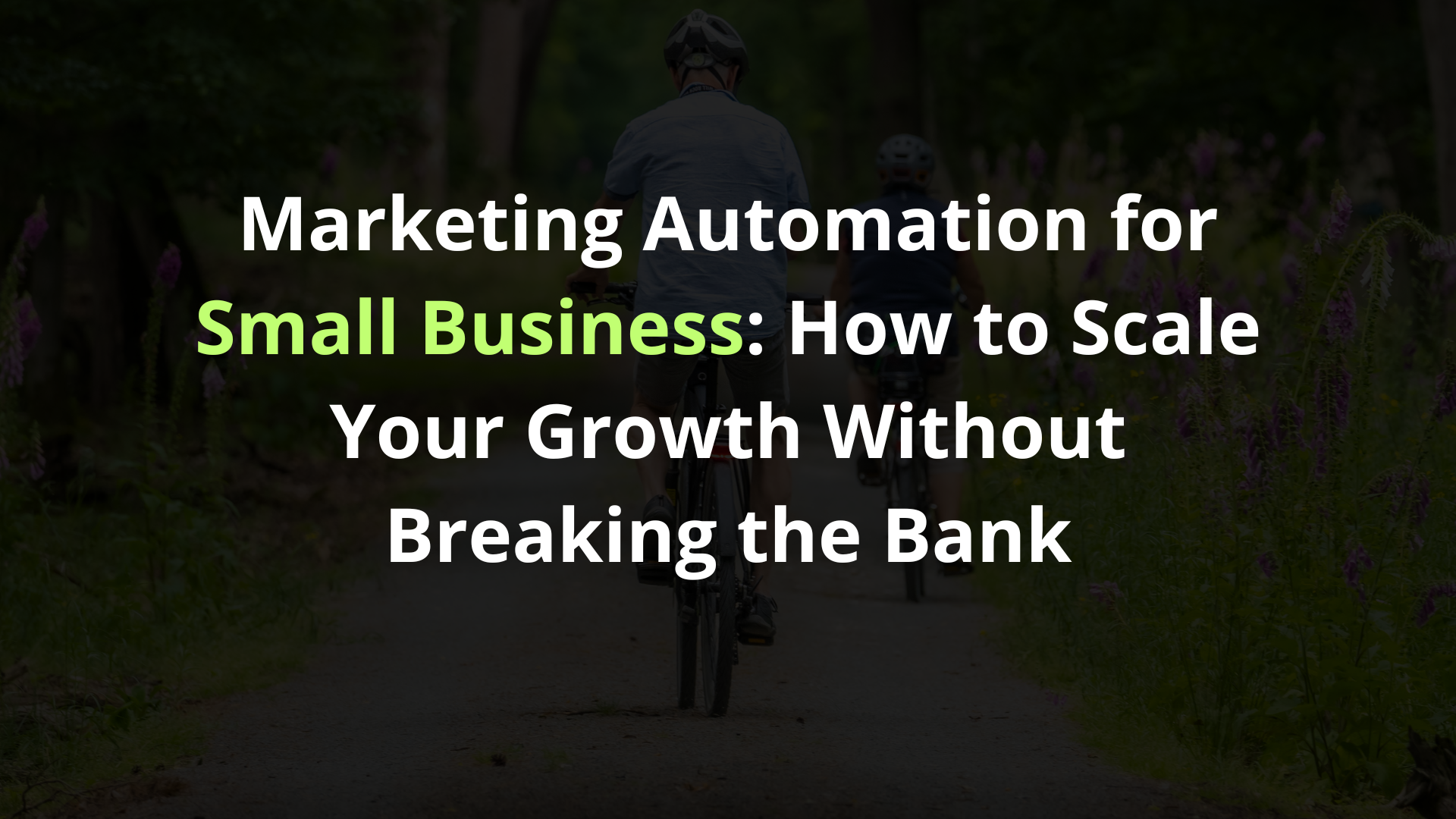Marketing Automation for Small Business: How to Scale Your Growth Without Breaking the Bank
Small businesses face a unique challenge: they need to compete with larger companies while operating with limited resources and smaller teams. This is where marketing automation becomes a game-changer, helping small and medium businesses (SMBs) streamline their marketing efforts, improve customer engagement, and achieve faster responses to leads and opportunities.
What is Marketing Automation?
Marketing automation refers to software platforms and technologies designed to help businesses market more effectively across multiple channels and automate repetitive marketing tasks. Instead of manually sending emails, posting on social media, or following up with leads, marketing automation handles these processes automatically based on predefined triggers and customer behaviors.
For small businesses, this technology levels the playing field by allowing them to operate with the efficiency and sophistication of much larger organizations, even with limited staff and resources.
Why Marketing Automation for SMBs is Essential in 2025
Small and medium businesses that embrace marketing automation gain several critical advantages:
Improved Lead Response Times: Studies show that companies responding to leads within five minutes are 100 times more likely to connect with prospects. Marketing automation enables faster responses through automated follow-ups, instant notifications, and streamlined lead routing.
Consistent Customer Communication: Automation ensures that no lead falls through the cracks and that customers receive timely, relevant communications throughout their journey with your business.
Resource Optimization: With automation handling routine tasks, your team can focus on strategy, creative work, and high-value activities that drive business growth.
Better Data and Insights: Marketing automation platforms provide detailed analytics and reporting, helping SMBs make data-driven decisions about their marketing strategies.
Key Marketing Automation Features for Small Businesses
Email Marketing Automation
Automated email sequences can nurture leads, onboard new customers, and re-engage inactive subscribers. Welcome series, abandoned cart reminders, and birthday campaigns can run without manual intervention.
Lead Scoring and Management
Automatically score leads based on their behavior and demographics, ensuring your sales team focuses on the most promising prospects first.
Social Media Scheduling
Plan and schedule social media posts across multiple platforms, maintaining consistent online presence without daily manual posting.
Customer Segmentation
Automatically segment customers based on purchase history, behavior, and preferences to deliver more personalized marketing messages.
CRM Integration
Sync marketing efforts with customer relationship management systems to ensure seamless handoffs between marketing and sales teams.
Implementing Marketing Automation: A Step-by-Step Guide
Step 1: Define Your Goals
Start by identifying what you want to achieve with marketing automation. Common goals include generating more leads, improving customer retention, increasing sales, or achieving faster responses to customer inquiries.
Step 2: Map Your Customer Journey
Understanding how customers interact with your business helps you identify the best automation opportunities. Map out touchpoints from initial awareness through purchase and beyond.
Step 3: Start Small and Scale
Begin with simple automations like welcome emails or basic lead nurturing sequences. As you become comfortable with the platform, gradually add more sophisticated workflows.
Step 4: Test and Optimize
Continuously monitor your automation performance and make adjustments based on results. A/B test email subject lines, timing, and content to improve effectiveness.
Best Practices for Marketing Automation Success
Personalization is Key: Use customer data to personalize messages beyond just inserting names. Tailor content based on interests, purchase history, and behavior.
Mobile Optimization: Ensure all automated communications are mobile-friendly, as many customers will view them on smartphones and tablets.
Compliance and Privacy: Follow regulations like GDPR and CAN-SPAM Act. Always provide clear unsubscribe options and respect customer privacy preferences.
Integration Strategy: Connect your marketing automation with other business tools like your CRM, e-commerce platform, and customer service software for a unified approach.
Common Mistakes to Avoid
Many small businesses make the mistake of trying to automate everything at once. Start with high-impact, low-complexity automations and gradually build complexity as your team becomes more comfortable with the technology.
Another common error is neglecting to regularly update and maintain automated sequences. Customer preferences and market conditions change, so your automation should evolve accordingly.
Measuring Success: Key Metrics to Track
Monitor these important metrics to gauge your marketing automation effectiveness:
Response Time: How quickly are you responding to new leads?
Email Open and Click Rates: Are your automated emails engaging recipients?
Lead Conversion Rates: What percentage of leads are becoming customers?
Customer Lifetime Value: Is automation helping increase customer value over time?
ROI: Are you seeing positive returns on your automation investment?
The Future of Marketing Automation for Small Businesses
As artificial intelligence and machine learning technologies continue to advance, marketing automation will become even more sophisticated and accessible to small businesses. Features like predictive analytics, advanced personalization, and voice-activated marketing will help SMBs compete more effectively in an increasingly digital marketplace.
Getting Started Today
Marketing automation represents one of the most valuable investments a small business can make. By automating repetitive tasks, improving response times, and delivering more personalized customer experiences, SMBs can achieve significant growth without proportionally increasing their marketing staff.
The key to success lies in starting small, focusing on your most important customer touchpoints, and gradually building more sophisticated automation as you gain experience and see results. With the right approach, marketing automation can transform your small business into a more efficient, customer-focused, and profitable organization.
Remember, the goal isn't to replace human interaction but to enhance it by ensuring faster responses, more consistent communication, and better use of your team's time and expertise.

